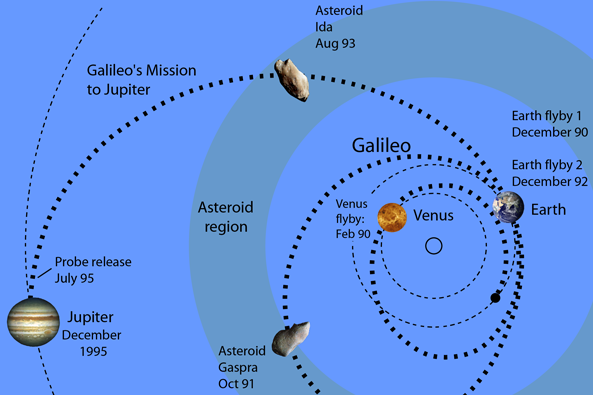Galileo Mission
Launched on October 19, 1989, the Galileo spacecraft was designed for a study of Jupiter. After six years and about 2.5 billion miles, it reached Jupiter on December 7, 1995. The distance between to orbits of Earth and Jupiter is about 390 million miles. A 23 month survey of the Jupiter system was scheduled. The total cost of the mission is about $1.6 billion.
Originally scheduled to be launched from the space shuttle in 1985, it would have been at Jupiter in 1987. Launch delays, the 1986 Challenger disaster, and the movement of the planets put it on a much slower and more circuitous path to Jupiter.
Galileo has been boosted in its journey by gravity-assist maneuvers around Venus in 1990, around the Earth in 1990 and 1992, and around the asteroid Gaspra in 1991. It also had a close flyby of the asteroid Ida, at which it discovered a tiny moon of Ida, about 1 mile in diameter.
In 1994, Galileo was the only instrument in position to view the actual impacts of Comet Shoemaker-Levy 9 with the surface of Jupiter.
The journey of Galileo was plagued with difficulties like the failure of the main antenna to deploy. This forced the rewrite of the spacecraft's onboard software to make use of the backup antenna. An onboard recorder stored information for slower transmission to the Earth from the smaller antenna.
The Jupiter probe was separated from the spacecraft in July, 1995 in preparation for the encounter with Jupiter in December. Galileo entered orbit around Jupiter on December
7, 1995.
|
